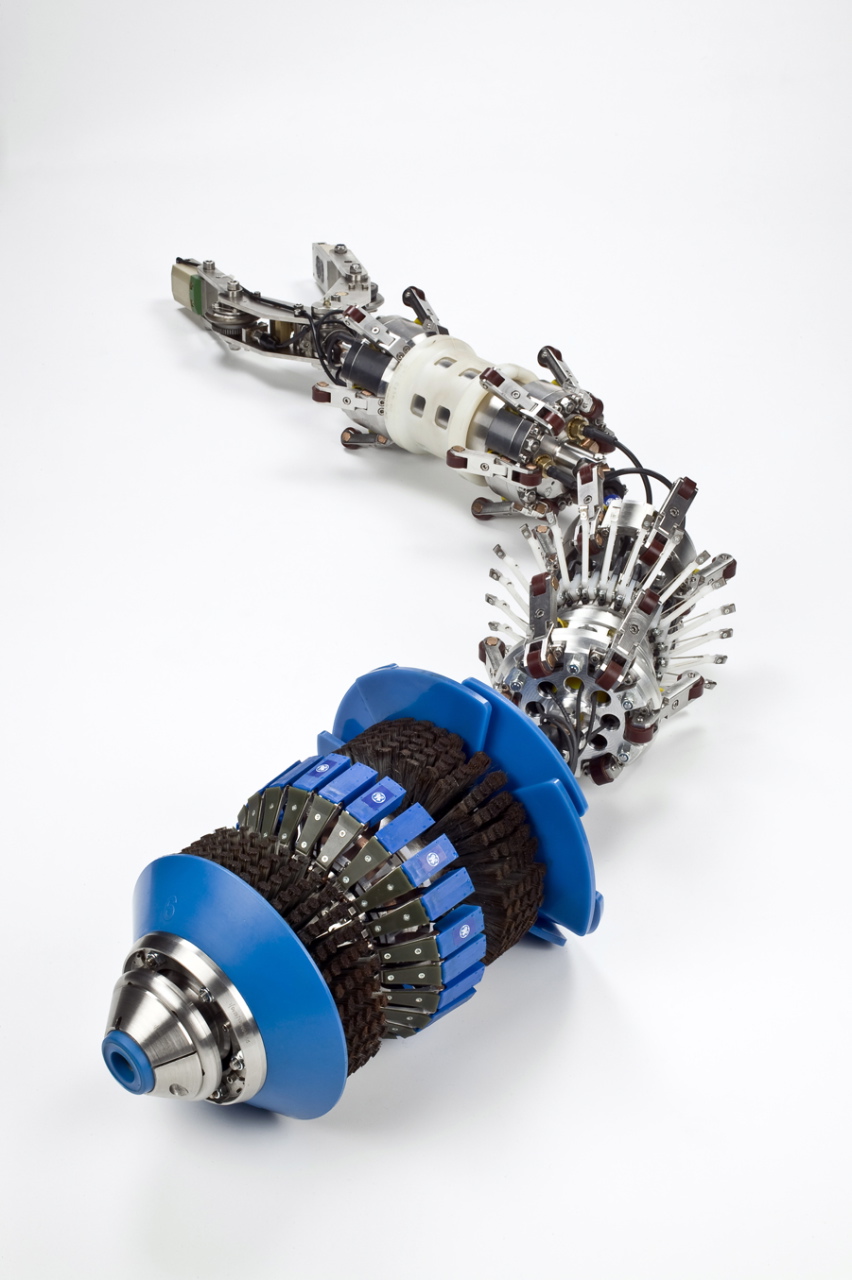Protecting a Precious Resource
tools comes with a larger sizing tolerance for metal loss (typically ±10 percent wt), it is one of the most popular inspection tools for in-service pressurized pipelines, principally due to its low cost and long track record.
Typically, an MFL tool consists of two or more bodies. One body is the magnetizer with the magnets and sensors, and the other body houses the electronics and batteries. Magnetic sensors are mounted between two magnets and then connected to the pipe wall with brushes. The connection creates a magnetic circuit as the tool travels inside the pipe with the flow of the product. The sensors detect the magnetic flux leakage caused by the metal loss in the pipe wall. Separate caliper sensors measure the magnitude of internal restrictions such as dents.
Ultrasonic Wall Measurement measures the remaining wall thickness of the pipe and can be used in finite element calculations to determine the remaining strength. This technique is more costly but provides a highly accurate survey of corrosion and will also identify and size laminations as well as dents. However, line cleanliness can become an issue for ultrasonic technologies.

Figure 2: MFL Vehicle (Courtesy of Baker Hughes, a GE Company)
Ultrasonic Crack Detection uses sound waves to detect axially orientated cracks and other pipeline defects. Ultrasonic testing of cracks in pipelines is performed using an angled beam. As its name implies, angle beam testing is used to locate cracks and discontinuities that are oriented axially along the pipeline and perpendicular to the surface of the pipe. However, if the crack is sloping or orientated circumferentially, this inspection technology may often either fail to detect it or struggle to size it accurately. In addition, this method takes time, as the data processing and analysis of an ultrasonic ILI tool data is very complex.
Multiple inspection technologies may be required to detect varying types of pipeline defects. Operators must first know what they are looking for and then match the ILI technology to that task.
Conclusion
The regulatory environment for pipeline operators is complex, technically challenging, and ever-changing. However, pipeline operators of all sizes have access to experts within the pipeline integrity management industry, providing the skills and experience to help operators navigate these waters effectively.



















